If you dream of hiking through Italian hillsides, vineyards, olive groves and citrus orchards with epic seascape views, the Cinque Terre is the destination for you. Cinque Terre, which translates to “five lands,” is a district in northern Italy made up of five fishing villages scattered along the rugged Ligurian coast, all of which are linked by a hiking path that winds from village to village. You’ll spend your days in the Cinque Terre hiking above pristine waters, wandering down cobblestone alleyways between brightly colored houses, consuming local specialties such as fresh seafood and pesto, and drinking Italian wine. What more could you need?
If you’re just starting to explore the idea of traveling to the Cinque Terre, this guide is for you. We will cover:
Why Visit the Cinque Terre?
The Cinque Terre is part of the Italian Riviera. Although it’s full of history, you won’t find as many museums as you would in other tourist spots around Italy. Instead, the Cinque Terre is about enjoying gorgeous views during a day of moderate hiking, then settling in with a glass of wine and a bowl of pesto-laden pasta to watch the sunset.
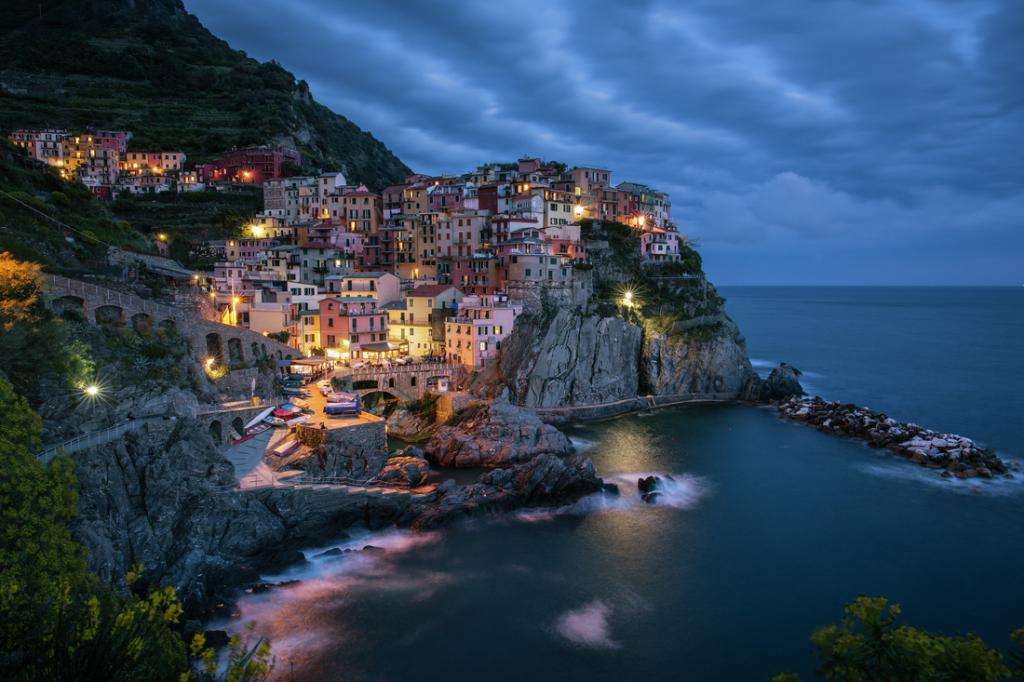
Evening settles over the village of Manarola.
The Cinque Terre is made up of five fishing villages that date back to the late Middle Ages. From west to east, the villages each have their own appeal:
Monterosso al Mare: This ancient hilltop city is the largest of the five. You can catch panoramic views from several vantage points, including the famous Old Castle and Church of Saint John the Baptist. The modern segment of the town is located at the foot of the hill; there, you’ll find the largest sand beach of the Cinque Terre, colorful houses and renowned restaurants.
Vernazza: The small village of Vernazza has a port down by the water and still contains architecture that harkens back to its days as a bustling maritime trade center. The main piazza contains dozens of restaurants, but you’ll also find elaborate colonnades and decorative portals within the village’s narrow alleyways.
Corniglia: Small and quiet, Corniglia is best known for its excellent wines and famous clothing-optional strand, Guvano Beach. It’s the only village of the five that isn’t on the coast itself but instead was built on a promontory projecting into the sea.
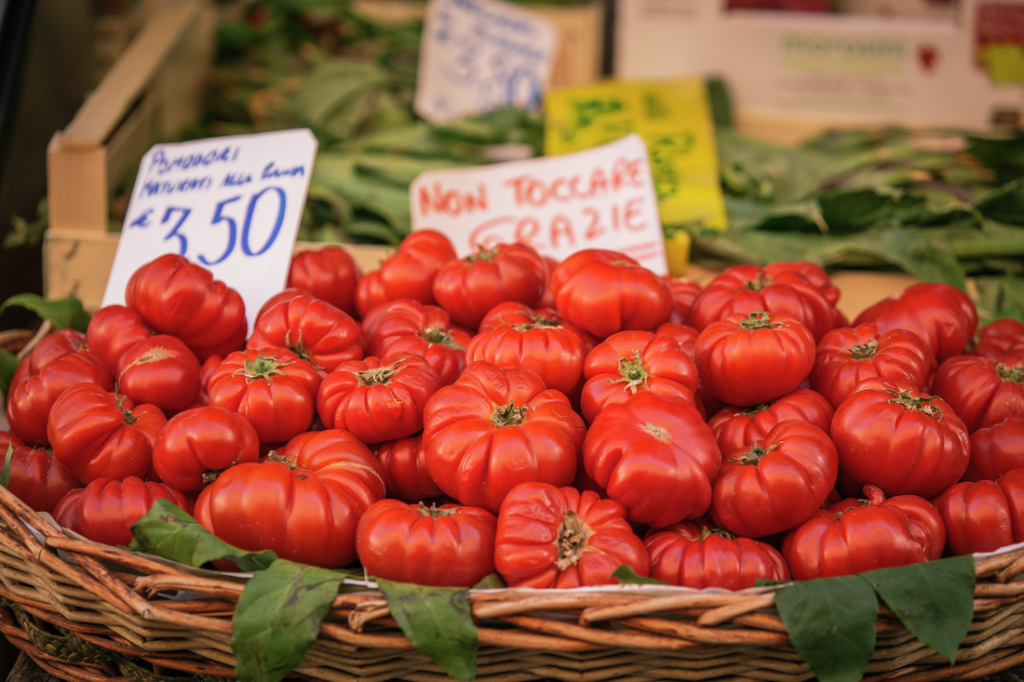
Fresh-off-the-vine tomatoes make for a tasty trail snack.
Manarola: The fourth cliffside city, Manarola, offers expansive views of the ocean and surrounding terraced hillsides. The churchyard of the Santuario di Nostra Signora della Salute in the nearby town of Volastra makes a great place to take in the sunset.
Riomaggiore: Riomaggiore is the busiest of the five villages. It has the nightlife, concerts and DJ nights, if you’re into that.
Portovenere, located east of Riomaggiore just beyond the Cinque Terre, is a lesser-known gem. If you have time, visit Portovenere to admire its beautiful setting on the “bay of poets,” Byron’s Grotto, great diving and hiking trails.
What to Do in the Cinque Terre
Protected as Italy’s first national park in 1999, the Cinque Terre contains more than 70 miles of footpaths. The most popular hike connects the five villages with well-marked footpaths, making it a great route for taking in the cliffside views. You can hike between Monterosso and Riomaggiore in one day, as it’s only 7.5 miles one-way.
There are many other options for hiking in the area outside of this well-known trail. Some other popular trails include:
- Levanto to Monterosso: This moderately challenging trail starts in Levanto, northwest of Monterosso, and travels for 5 miles along an old donkey path. You’ll wind through pine forests and other Mediterranean vegetation, see chapel and lighthouse ruins and take in hillside vistas before descending a set of steep stairs to Monterosso.
- Riomaggiore to Portovenere: This challenging hiking trail begins with a long ascent, which typically takes hikers around 45 minutes. Then you’ll wind through quiet pine forests with epic panoramic views before you find a clifftop path overlooking the Mediterranean Sea. After approximately 8 miles, you’ll descend into Portovenere. If you’d like, there’s a ferry that takes you back to Levanto from Portovenere.
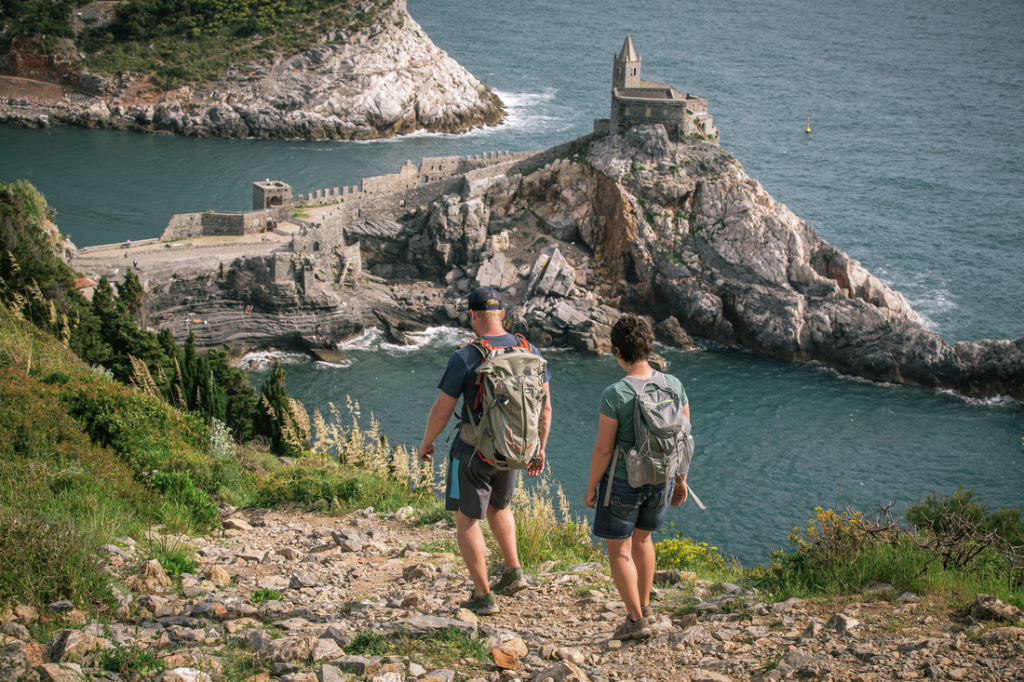
Hikers ready for the descent down one of the Cinque Terre’s steep sections of trail.
When you arrive in the Cinque Terre, you can inquire about additional hikes at the visitor services offices. Guided hikes through nearby vineyards, olive groves and citrus orchards can be booked through visitor services fairly easily. Depending on the time of year, you’ll also want to ask the visitor services representatives (or check local publications like the Cinque Terre Insider) about landslides and trail conditions.
Most of the hikes in the Cinque Terre involve stairs—lots and lots of stairs. Although you won’t see much elevation gain overall at the end of your hike, you should be prepared to tackle steep inclines and descents all day. Consider bringing trekking poles to lessen the strain on your knees.
How to Plan Your Trip
How to get to the Cinque Terre: The Cinque Terre is easily accessible by train. Most people fly into Milan or Rome. Once you’re in Italy, you can make your way to the Cinque Terre by taking a train from Florence, Milan or Pisa to the La Spezia or Santa Margarita stations. It’s common to start your trip in La Spezia; from there, you can connect easily to the five villages via a local train.
Transportation within Cinque Terre: Many people buy the Cinque Terre card as a means of traveling between the five towns. The card, which is 23 euros for an adult for two days (at the time of this writing), gives you unlimited access to the local train that runs between Levanto and La Spezia, stopping at each of the five villages. The trains run in each direction twice per hour. The Cinque Terre card also acts as a permit for the national park, which you’ll need if you’re hiking at all, and it provides access to guided tours, occasional Wi-Fi hotspots and shuttle buses, as well. You can buy the Cinque Terre card at any train station in the area.
Public ferries also run between La Spezia and Portovenere in both directions, on the hour. They stop in every village except Corniglia during the high season, between April and October.
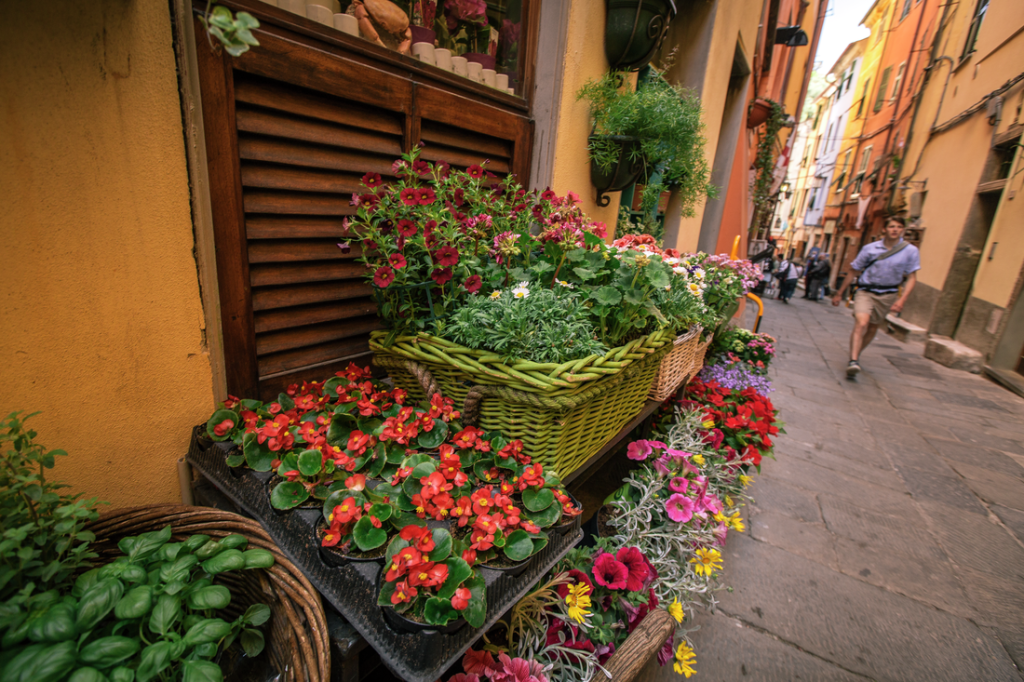
The villages of the Cinque Terre hold no shortage of colors, scents and sights.
There are no options for assisted transport within the towns of the Cinque Terre, which can be difficult for people who have young children or mobility challenges. It’s worth noting that most of the trains arrive up on a hillside, so you’ll probably have to make your own way down the hill with your bags because there are no taxis. So consider packing light.
Money: Italy uses the euro. Consider taking out some cash at the airport before you travel to Italy, just in case you end up at a smaller restaurant or shop that does not accept credit cards. Still, the Cinque Terre has become so well traveled that most places take credit and debit cards, and there are also ATMs in most of the towns.
Where to stay in the Cinque Terre: There are some good hotel options in Cinque Terre, or you can check Airbnb. You should book a hotel or room in advance, as the villages have become popular tourist destinations.
Even if you’re planning to visit all of the towns, you can still stay in one town and use it as your home base. Use local transport to explore the other municipalities, as everything is quite close together. That way you don’t have to pack and unpack every day.
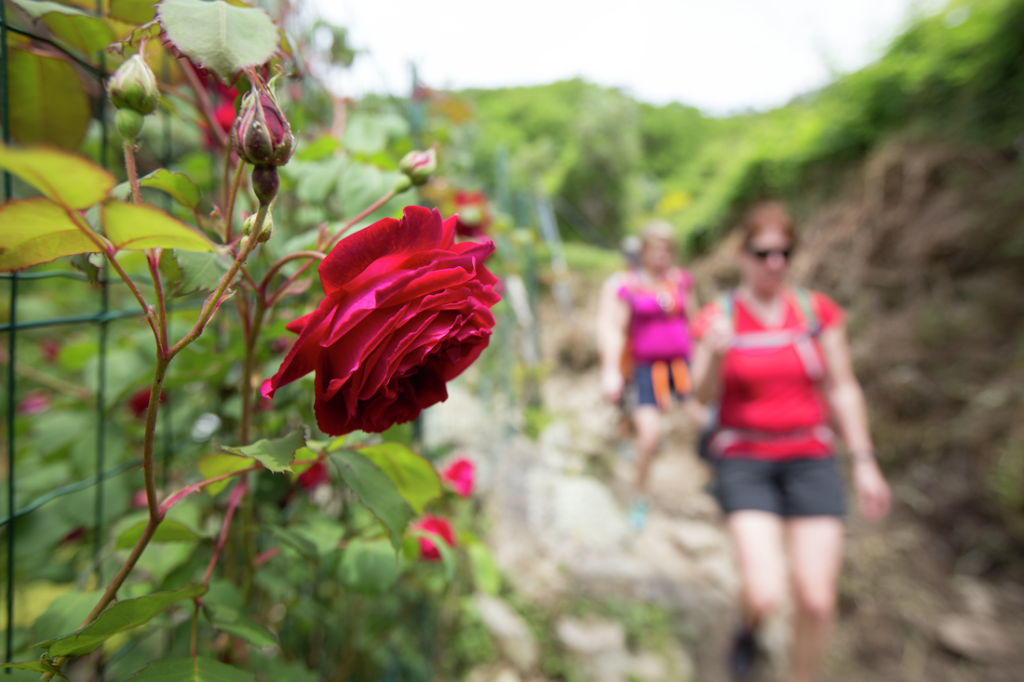
Fragrant roses line the Sentiero Azzurro hiking trail.
When to visit the Cinque Terre: Avoid the end of the summer when it’s hot and crowded. Instead, aim to visit the Cinque Terre in the late spring and early summer months, from April through June. During these months, the weather is mild and the sun is shining. It’s warm enough to go swimming and the ferries are running. September can also be a nice month to visit, as it’s still warm and amenities are still available. During the off-season, from October through March, you’ll face rain, colder weather and fewer restaurant and hotel options.
What to Pack: Because of the hilly terrain, we recommend bringing a daypack, hiking boots with good ankle support and trekking poles.
Consider packing layers, as the weather can change quite a bit between early morning and late afternoon. Make sure you pack a moisture-wicking short-sleeve or long-sleeve shirt, and a mid layer like a pullover or a fleece for the morning. Bring a rain jacket to fend off the wind and precipitation that batters the Italian Riviera.
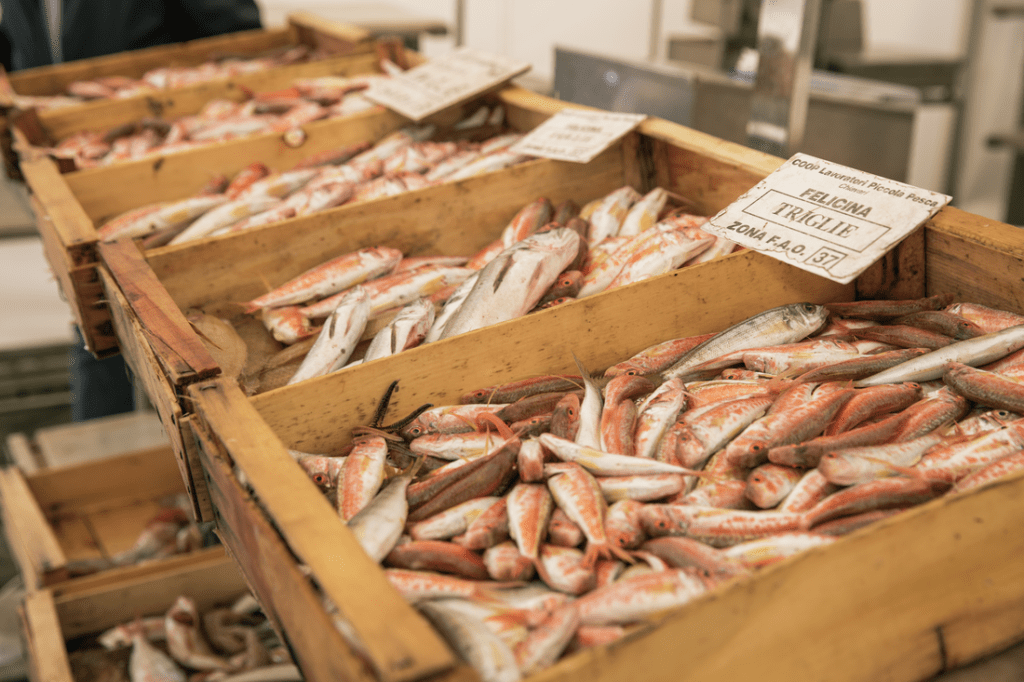
Like anchovies? The flavorful fish are a popular food on the Cinque Terre circuit.
What to Eat and Drink: Come to the Cinque Terre for the beautiful views, stay for the delicious food. Seafood is popular in this area, given each town’s proximity to the sea. Expect many olive oil-based dishes, especially dishes with pesto. (Cinque Terre locals claim to have invented the sauce.) You should also search out fresh pasta and keep an eye out for anchovies. Monterosso is known for its anchovies—the town even has festivals dedicated to the flavorful little fish every year.
Key phrases to know:
-
- Si: Yes
- No: No
- Ciao: Hello
- Buon giorno: Good morning
- Buona sera: Good evening
- Buona notte: Goodnight
- Per favore: Please
- Grazie: Thank you
- Prego: You’re welcome
